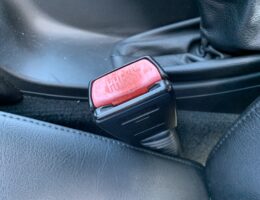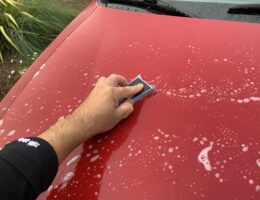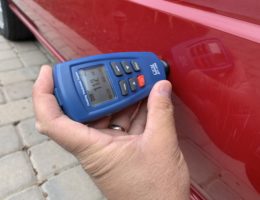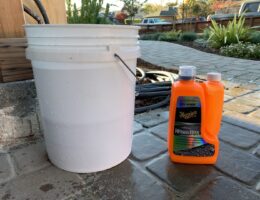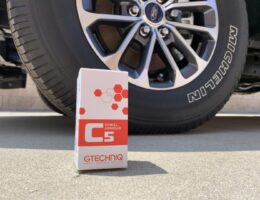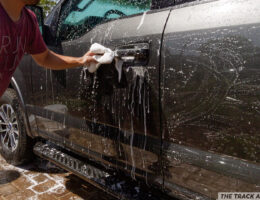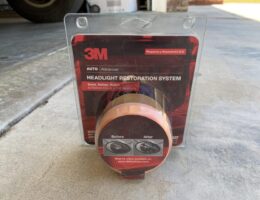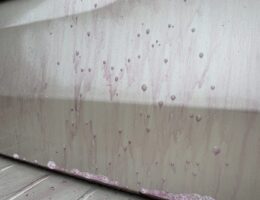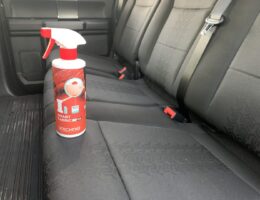Car detailing is sometimes really all about the details. These small details when looking at them individually may seem inconsequential, but taking a step back it can make a dramatic difference. Take the typical seat belt buckle with the little red button on it. These little plastic buttons look great when they’re new, but over many years, the plastic oxidizes and eventually the red color fades. Then, you’re left with a faded red seat belt button that is commonly found on older vehicles.
On this guide, I’m focusing on removing heavy orange peel and the techniques used to do this. Typically the process involves sanding or wet-sanding the vehicle from lower to higher grit, then following up with an aggressive compound to buff/polish the small scratches out. I will be demonstrating both dry and wet-sanding techniques, as well as following up with a Meguiar’s compound, microfiber cutting pad, and a long throw polisher to finish it off.
Instead of spending hundreds to thousands of dollars on an ultrasonic paint thickness gauge, we can instead use an affordable magnetic/Eddy-current gauge as long as we have an understanding what the typical layers on a modern day car are, what the thickness of these layers are. By knowing the typical thickness of each layer that encompasses a “paint job”, we can have a general idea of how much clear coat we have before we wear down to the paint, primer, or even substrate.
Meguiar’s Hybrid Ceramic Wash and Wax is different from your traditional “wash ‘n wax” product that traditionally combines soap and wax into one. This product separates both car soap and wax into two separate chambers in its packaging: a larger one containing a low-sudsing soap to gently clean the vehicle, and a smaller one with the wax additive that exhibits excellent hydrophobic properties. This guide on how to use Meguiar’s Hybrid Ceramic Wash & Wax is intended to help supplement the provided instructions from Meguiar’s and to provide some helpful tips and tricks to getting the most out of this product based on my own experiences. A big thank you to Meguiar’s for providing this product for me to test and write about.
Gtechniq makes a wheel coating called C5 Wheel Armour that not only protects wheels (and brake calipers), but also minimizes brake dust and dirt from sticking to the surface that it is applied to. A wheel coating may differ from a ceramic coating due to its ability to withstand higher temperatures—temperatures that can be seen coming from the brakes of a car. In this post, I show the preparation and application of Gtechniq C5 Wheel Armour to a set of wheels, as well as how easy it is to wash later down the road.
So you’ve just ceramic coated your car or perhaps a car detailer ceramic coated your car for you. Now, you may be wanting to know how to wash and maintain it properly. Contrary to what some people may believe, ceramic coatings are not some mysterious product that needs extra special care. It simply just needs to be washed with proper wash techniques and with the right car wash products.
One of the biggest bang-for-the-buck improvements you can do on your car is to restore the headlights. I don’t know how many cars I pass on a daily basis that have cloudy, hazy, and yellowed headlight lenses, but I know that almost anyone can spend about $10-$15 for a do-it-yourself headlight restoration kit and can make their headlights look like new. 3M sells a kit, which comes with everything you need with the exception of a power drill to completely revitalize the headlights on your car.
Regardless of whether your car was maintained well or poorly, it is always wise to perform an iron decontamination (along with a mechanical decontamination) as preparation for a wax, sealant, or coating. The reason for this is that if you are going to apply an LSP (last step product) such as one of these mentioned, you don’t want to be sealing in any iron contaminants, which could continue eating through your paint. If you ever plan to apply a protective wax, sealant, or coating, consider doing an iron decontamination with an iron remover.
When compared to other fabric guards (such as 303 Fabric Guard, Scotchgard, etc.), this one has a higher effectiveness for repelling water and stains. After evaluating my options, I was going to apply the fabric guard on my new truck. So, I only wanted the best possible formula; out of these three choices for fabric protection, Gtechniq Smart Fabric was the clear winner although it did cost the most as well.

